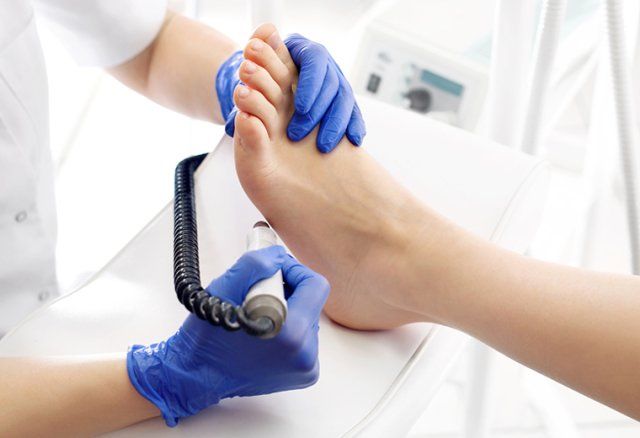EPAT (EXTRACORPOREAL PULSE ACTIVATION TECHNOLOGY) FOR YOUR HEEL PAIN PROBLEMS
Heel pain is the most common foot problem presenting in our office. It is often attributed to plantar fascitis. While most heel pain is responsive to conservative therapy including orthotics, strapping, physical therapy, NSAIDS, corticosteroid injections and rest, 10% of patients remain with pain. These patients are faced with the choice of having surgery or living with pain.
An alternative to surgery includes Shockwave Therapy. Ossatron Shockwave Therapy
is commonly used by Pensacola Podiatry, PA
with high success rates. But until now, this method has been costly and requires anesthesia.
A new technology introduced to the panhandle by Pensacola Podiatry, PA, EPAT, is inexpensive and uses the same technology.
Swiss made EPAT is used extensively in Europe and Canada. The mode of action during Pulse Therapy is to stimulate chemical processes providing improved blood circulation in the pain regions to promote natural healing.
What does EPAT treat?
- Plantar fascitis
- Bursitis ( Bursitis is inflammation of a bursa. The major bursae are located adjacent to the tendons near the large joints, such as the shoulders, elbows, hips, and knees.)
- Tibialis anterior syndrome
- Achilles tendonitis
- Achillodynia
- Heel spurs
- Hallux limitus
- Various chronic enthesopathies (painful irritation of tendon attachments due to overexertion and improper strain, or due to a degenerative process)
- Various sports injuries
- Painful trigger points(acute and chronic painful neck, back, shoulder and etc. due to chronically shortened and thickened muscle tissue)
Benefits of EPAT
- Patients are immediately fully weight-bearing.
- Bilateral patients can be treated at the same time.
- No incision-No risk of infection at the treatment of site-No scar tissue formation.
- Patients are able to return to work/normal activities within 24-48 hours, resuming strenuous activities after 4 weeks.
- Patients evaluated for success at 12 weeks.
- Over 80% of successful outcomes [Published Data-Long-term pain relief (Results retained)].
- Non-invasive so biomechanics are not affected-future treatment options are not limited.
- Cost-Effective.
- Reduced conservative care-ends the cycle- Reduced aftercare and complications costs.
- Reduced cost from lost work.
- Fast, safe and effective.
- Does not require anesthesia

